Related Research Articles

Captain William Hobson was a British Royal Navy officer who served as the first Governor of New Zealand. He was a co-author of the Treaty of Waitangi.

The provinces of the Colony of New Zealand existed as a form of sub-national government. Initially established in 1846 when New Zealand was a Crown colony without responsible government, two provinces were established. Each province had its own legislative council and Governor. With the passing of the New Zealand Constitution Act 1852 the provinces were recreated around the six planned settlements or "colonies". By 1873 the number of provinces had increased to nine, but they had become less isolated from each other and demands for centralised government arose. In 1875 the New Zealand Parliament decided to abolish the provincial governments, and they came to an end in November 1876. They were superseded by counties, which were later replaced by territorial authorities.

The New Zealand Parliament is the unicameral legislature of New Zealand, consisting of the Sovereign (King-in-Parliament) and the New Zealand House of Representatives. The King is usually represented by his governor-general. Before 1951, there was an upper chamber, the New Zealand Legislative Council. The New Zealand Parliament was established in 1854 and is one of the oldest continuously functioning legislatures in the world. It has met in Wellington, the capital of New Zealand, since 1865.
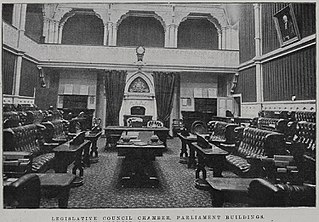
The New Zealand Legislative Council was the upper house of the General Assembly of New Zealand between 1853 and 1951. An earlier arrangement of legislative councils for the colony and provinces existed from 1841 when New Zealand became a colony; it was reconstituted as the upper house of a bicameral legislature when New Zealand became self-governing in 1852, which came into effect in the following year.
New Munster was an early original European name for the South Island of New Zealand, given by the Governor of New Zealand, Captain William Hobson, in honour of Munster, the Irish province in which he was born.

The constitution of New Zealand is the sum of laws and principles that determine the political governance of New Zealand. Unlike many other nations, New Zealand has no single constitutional document. It is an uncodified constitution, sometimes referred to as an "unwritten constitution", although the New Zealand constitution is in fact an amalgamation of written and unwritten sources. The Constitution Act 1986 has a central role, alongside a collection of other statutes, orders in Council, letters patent, decisions of the courts, principles of the Treaty of Waitangi, and unwritten traditions and conventions. There is no technical difference between ordinary statutes and law considered "constitutional law"; no law is accorded higher status. In most cases the New Zealand Parliament can perform "constitutional reform" simply by passing acts of Parliament, and thus has the power to change or abolish elements of the constitution. There are some exceptions to this though – the Electoral Act 1993 requires certain provisions can only be amended following a referendum.

Major General Robert Henry Wynyard was a British Army officer and New Zealand colonial administrator, serving at various times as Lieutenant Governor of New Ulster Province, Administrator of the Government, and was the first Superintendent of Auckland Province.
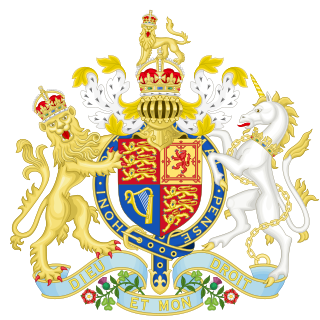
The New Zealand Constitution Act 1852 was an Act of the Parliament of the United Kingdom that granted self-government to the Colony of New Zealand. It was the second such Act, the previous 1846 Act not having been fully implemented.
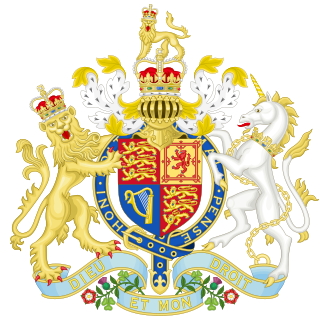
The New Zealand Constitution Act 1846 was an Act of the Parliament of the United Kingdom intended to grant self-government to the Colony of New Zealand, but it was never fully implemented. The Act's long title was An Act to make further Provision for the Government of the New Zealand Islands, and it received the royal assent on 28 August 1846.
William Swainson became the second, and last, Attorney-General of the Crown colony of New Zealand and instrumental in setting up the legal system of New Zealand. He was the first Speaker of the New Zealand Legislative Council.
The colonial secretary of New Zealand was an office established in 1840 and abolished in 1907. The office was similar to colonial secretaries found elsewhere in the British Empire.
Superintendent was the elected head of each Provincial Council in New Zealand from 1853 to 1876.

South Island nationalism refers to a nationalist movement in the South Island of New Zealand.
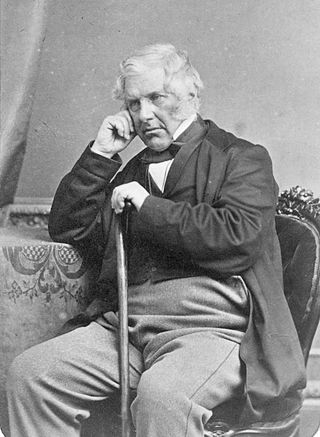
The Sewell Ministry was the first responsible government in New Zealand. Unlike previous executives, its members were held accountable to Parliament. This would form the basis for future governments in New Zealand.
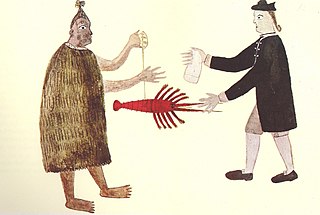
Wellington has been the capital of New Zealand since 1865. New Zealand's first capital city was Old Russell (Okiato) in 1840–41. Auckland was the second capital from 1841 until 1865, when Parliament was permanently moved to Wellington after an argument that persisted for a decade. As the members of parliament could not agree on the location of a more central capital, Wellington was decided on by three Australian commissioners.
William Spain was an English lawyer who was appointed in 1841 as a New Zealand Land Claims Commissioner to investigate land purchases from the Māori people by the New Zealand Company. He spent about four years in New Zealand, where he was one of the most highly-paid officials in the colony, before moving to New South Wales where he returned to work as a solicitor, became Inspector-General of Police and a member of the New South Wales Legislative Council.

The Colony of New Zealand was a colony of the United Kingdom of Great Britain and Ireland that encompassed the islands of New Zealand from 1841 to 1907. The power of the British Government was vested in the governor of New Zealand. The colony had three successive capitals: Okiato in 1841; Auckland from 1841 to 1865; and Wellington from 1865, which continues as the capital of New Zealand today.

John Salmon was an inaugural member of the New Zealand Legislative Council and a merchant.
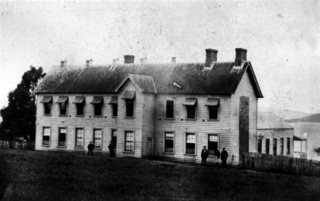
The General Assembly House, colloquially called "Shedifice" by the members of Parliament, was the first building to house the New Zealand Parliament in Auckland. It was in use by Parliament from 1854 until 1864 during the time that Auckland was the capital of New Zealand. It was also used by the Auckland Provincial Council, with Auckland Province owning the building from 1858. After the abolition of the provincial government system, the building was used by the government's survey department and was then used by Auckland University College. The General Assembly House was demolished in 1917 to make way for Anzac Avenue. Today, a reserve adjacent to Parliament Street called Parliament Reserve commemorates the location where the New Zealand Parliament met initially.
James Coates was a prominent pioneer settler of Auckland, New Zealand. He was also a senior official within the administration of the newly-established colony of New Zealand, following the proclamation of sovereignty by William Hobson and the signing of the Treaty of Waitangi in 1840.

